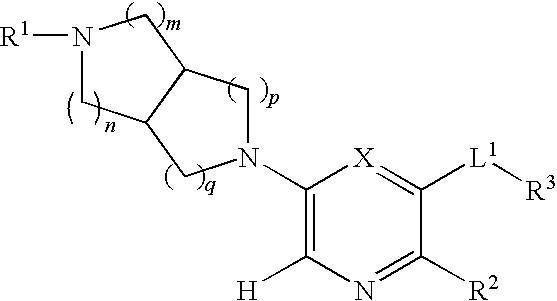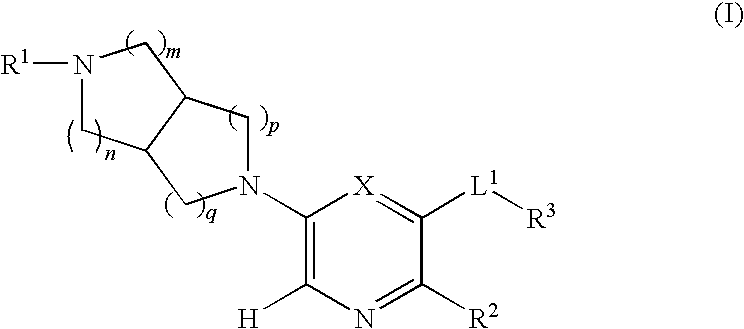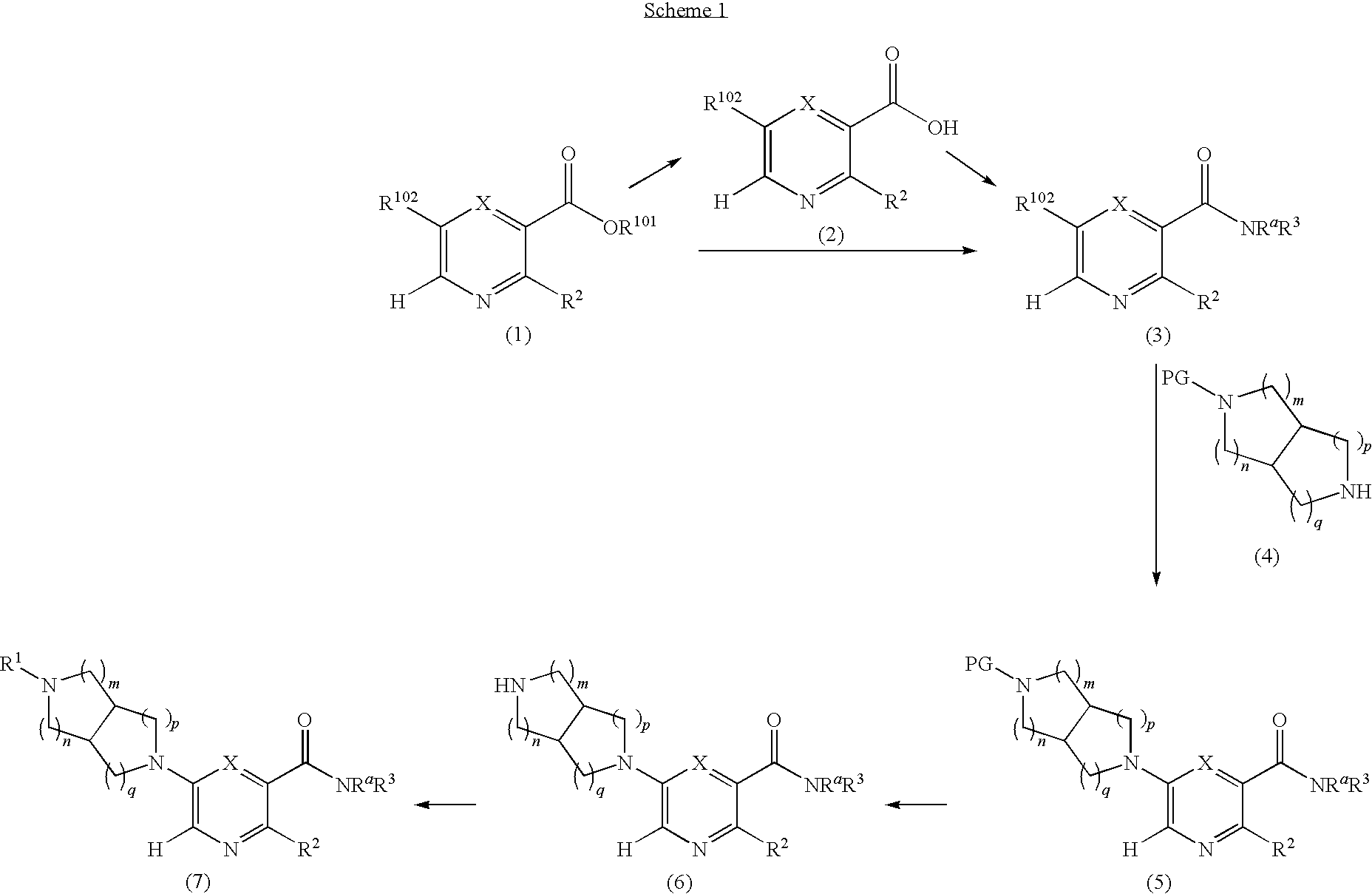Selective substituted pyridine ligands for neuronal nicotinic receptors
a neuronal nicotinic receptor and selective ligand technology, applied in the direction of biocide, muscular disorder, drug composition, etc., can solve the problem that nicotine also produces adverse effects
- Summary
- Abstract
- Description
- Claims
- Application Information
AI Technical Summary
Benefits of technology
Problems solved by technology
Method used
Image
Examples
example 1
N-(3,5-dimethylphenyl)-6-((3aR,6aS)-hexahydropyrrolo[3,4-c]pyrrol-2(1H)-yl)pyrazine-2-carboxamide
example 1a
(3aR,6aS)-5-benzyltetrahydropyrrolo[3,4-c]pyrrole-1,3(2H,3aH)-dione
[0096]A solution of N-benzyl-N-methoxymethyl-N-(trimethylsilylmethyl)amine (76.68 g, 0.29 mol, prepared as in Organic Syntheses (1989), 67, 133-140) in dichloromethane (130 mL) was added to an ice-cooled mixture of maleimide (25.53 g, 0.26 mol) and trifluoroacetic acid (2.2 mL, 0.028 mol) in dichloromethane (350 ml) over 40 min so that the reaction temperature remained between 0-5° C. The resulting bright yellow solution was allowed to warm gradually and stirred at room temperature for 27 h. The mixture was washed with saturated NaHCO3(aq) (80 mL) and the organic phase was dried (MgSO4) and concentrated under vacuum. The residual oil was stirred with 10% EtOAc-heptane (300 mL) for 15 h, and the resulting precipitate was isolated by filtration, washed with 10% EtOAc-heptane (150 mL) and dried under vacuum at 50° C. to provide the crude, title compound as a white solid (54.25 g). This was stirred with methanol (500 mL)...
example 1b
(3aR,6aS)-tert-butyl 5-benzylhexahydropyrrolo[3,4-c]pyrrole-2(1H)-carboxylate
[0097]A three-necked, 2 L flask with mechanical stirrer, thermometer, and addition funnel was charged with LiAlH4 (16.9 g, 0.445 mol) and THF (200 mL). The slurry was cooled in ice under a nitrogen atmosphere as a solution of the product from Example 1A (49.0 g, 0.202 mol) in THF (250 mL) was added drop-wise over 20 min such that the temperature remained below 14° C. After the addition was completed, the reaction mixture was stirred for 40 min with ice cooling, then heated at reflux for 3 h. The mixture was again cooled in ice and quenched by cautious, successive addition of water (17 mL), 15% NaOH(aq) (17 mL), and water (51 mL). The resulting slurry was filtered, and the cake washed well with EtOAc (2×400 mL). The combined filtrate and wash was concentrated under vacuum to provide a colorless oil (43.5 g), which was dissolved in dichloromethane (200 mL). The solution was stirred with ice cooling as di-tert...
PUM
| Property | Measurement | Unit |
|---|---|---|
| temperature | aaaaa | aaaaa |
| temperature | aaaaa | aaaaa |
| temperature | aaaaa | aaaaa |
Abstract
Description
Claims
Application Information
 Login to View More
Login to View More - R&D
- Intellectual Property
- Life Sciences
- Materials
- Tech Scout
- Unparalleled Data Quality
- Higher Quality Content
- 60% Fewer Hallucinations
Browse by: Latest US Patents, China's latest patents, Technical Efficacy Thesaurus, Application Domain, Technology Topic, Popular Technical Reports.
© 2025 PatSnap. All rights reserved.Legal|Privacy policy|Modern Slavery Act Transparency Statement|Sitemap|About US| Contact US: help@patsnap.com



